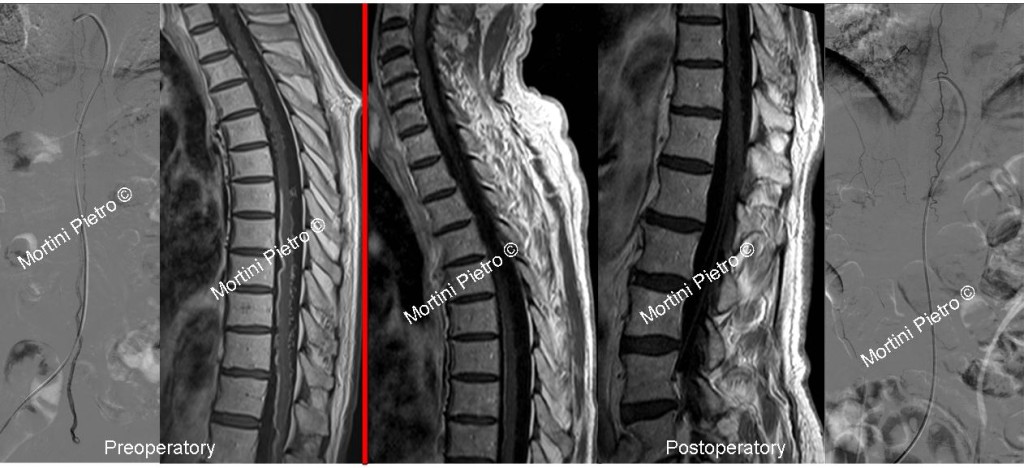An Arteriovenous Fistula, or DAVF, is an irregular linking of vessels in the tissues in the brain or spinal cord area where the arteries are connected to veins or sinuses (venous spaces).
Arteriovenous fistulas are different than arteriovenous malformations because they are not found in the tissue of the brain/spinal cord, but are found in the dura mater or arachnoid (the surroundings of the brain and spinal cord). Arteriovenous fistulas transport high-pressure blood from the arteries into the veins that channel blood from the brain/spinal cord, leading to increased pressure of the venous systems around the brain and spinal cord.
Symptoms
There are two major types of Arteriovenous fistulas:
- dural fistulas
- carotid-cavernous fistulas
These are acquired lesions or developed later in life as a result of infection or traumatic injuries, however most develop without any specific precipitating event.
Patients with dural arteriovenous fistulas typically experience a rumbling noise in one ear following the heartbeat, also known as a bruit.
Patients with carotid-cavernous fistulas typically experience swelling and redness of one or both eyes in addition to a bruit.
Diagnosis
Typically, doctors try to close arteriovenous fistulas before the increased pressure in the venous system can cause serious damage to the brain or spinal cord.
Arteriovenous fistulas can be found in an angiogram. This is the best way to discover it because it shows the relationship of the arteriovenous fistulas and the surrounding arteries and veins. Usually MRIs and CT scans seem normal when an arteriovenous fistula is present.
Treatment
Arteriovenous fistulas can be treated using a combination of methods.
• Minimally invasive endovascular embolization — usually adequate to cure most arteriovenous fistulas. A catheter is passed through the groin up into the arteries in the brain that lead to the arteriovenous fistula and inject liquid embolic agents into these arteries. This injection closes the artery and lessens the flow of blood through the arteriovenous fistula.
• Microsurgical resection — used for arteriovenous fistulas that cannot be closed with endovascular embolization. During microsurgical resection, a craniotomy is completed and using the microscope detaches the arteriovenous fistula from the tissues surrounding the brain or spinal cord.
 English
English Italiano
Italiano